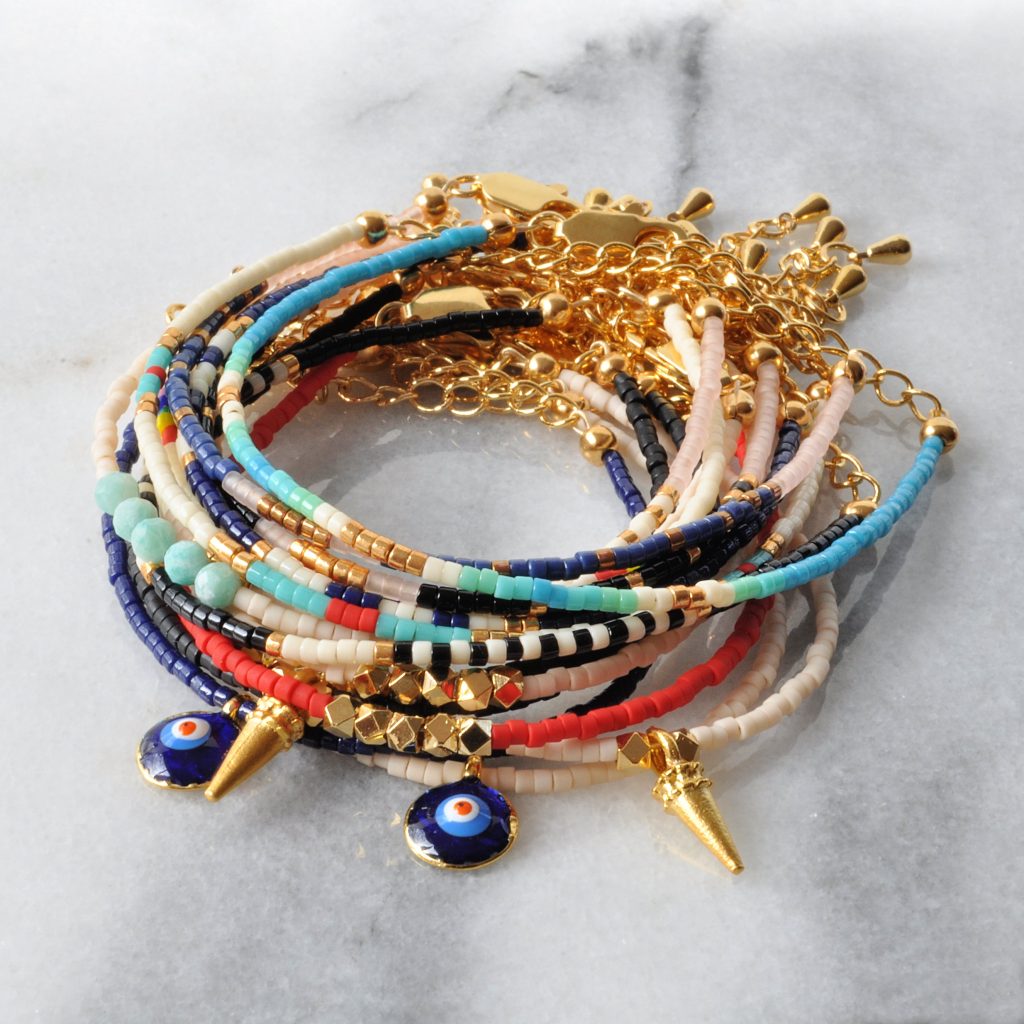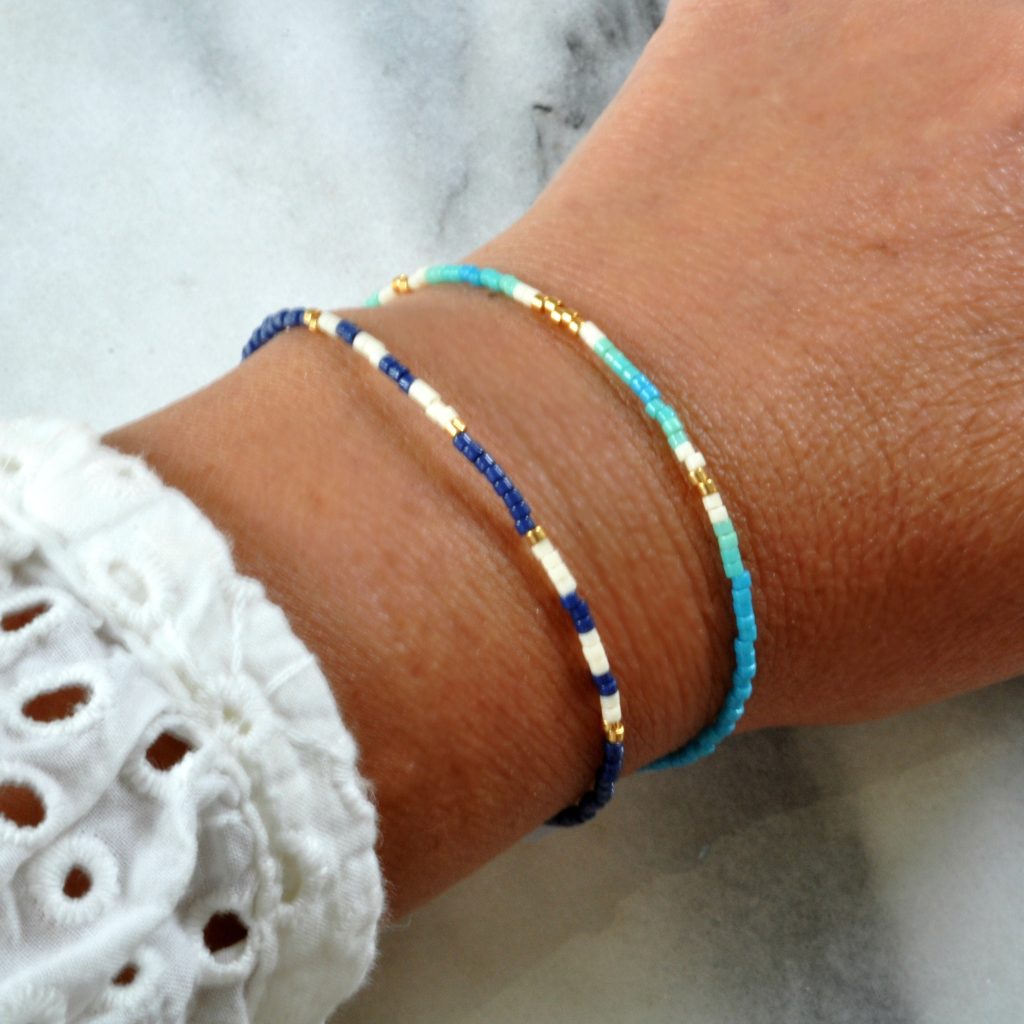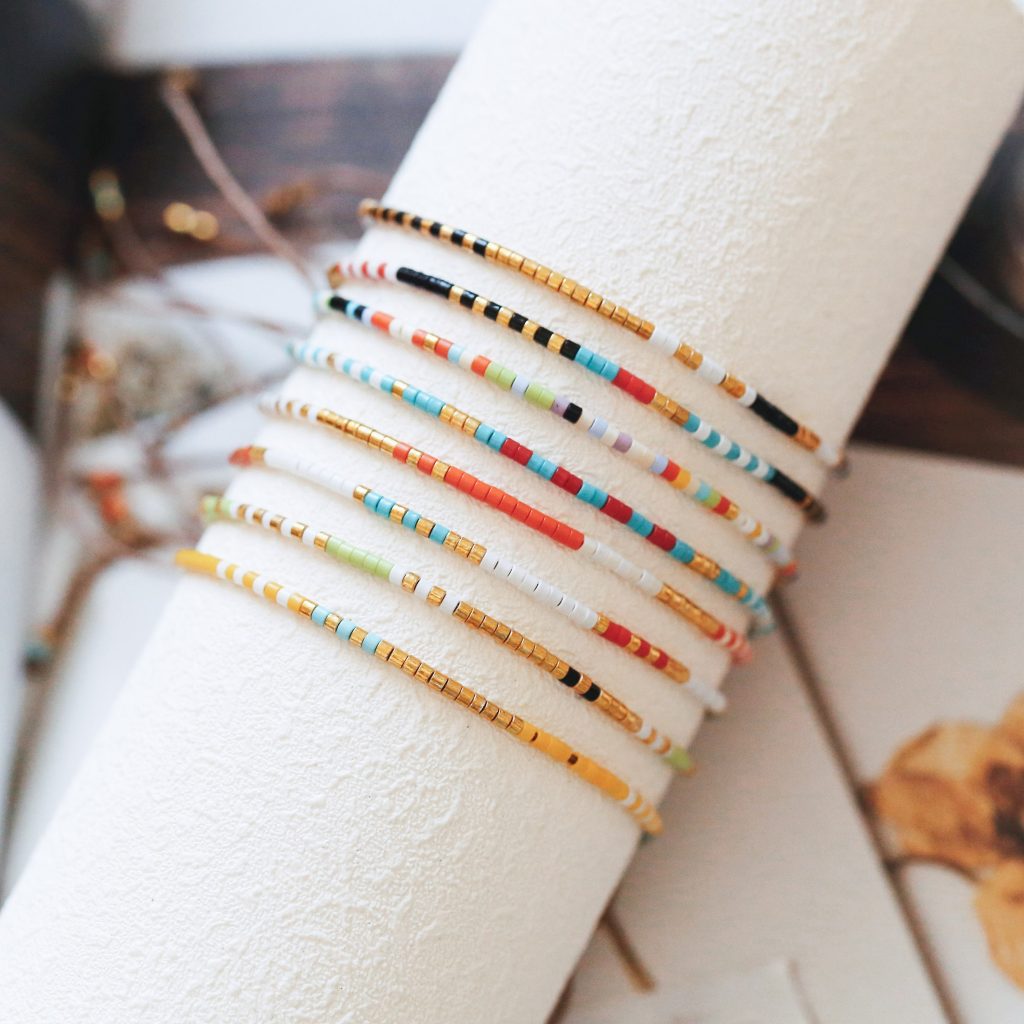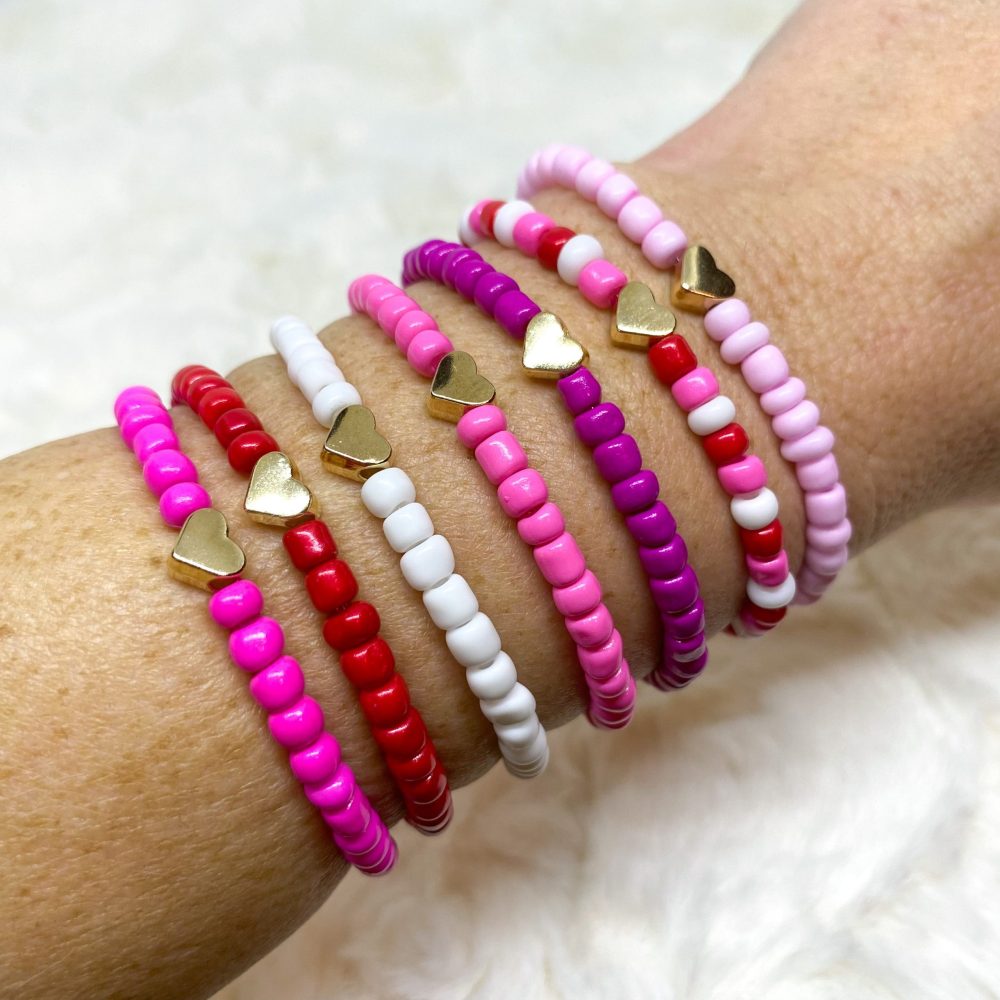Introduction
Seed bead bracelet are more than just adornments; they are tiny works of art crafted through a blend of skill, creativity, and passion. From their humble origins to their modern-day allure, these bracelets have captivated artisans and wearers alike with their intricate designs and vibrant colors. Let’s delve into the fascinating world of seed bead bracelets, exploring their history, the techniques used to create them, and the creative possibilities they offer.
A Brief History of Seed Bead Bracelets
Seed beads have a rich history dating back thousands of years, used by various cultures around the world for both practical and ornamental purposes. Originally made from natural materials like shells, stones, and even seeds, these beads were meticulously crafted and traded across continents, symbolizing wealth, status, and cultural identity.
The modern seed bead, typically made from glass, emerged in the late 19th century with the industrial revolution’s advancements in bead manufacturing techniques. This innovation democratized access to beads, allowing artisans to explore new designs and techniques, including the creation of intricate seed bead bracelets.
Techniques and Materials
- Stringing and Loom Weaving: Seed bead bracelets are often crafted using two primary techniques: stringing and loom weaving.
- Stringing: This method involves threading seed beads onto a flexible material like nylon thread, wire, or elastic cord. Beaders can create simple or complex patterns by alternating bead sizes, colors, and textures.
- Loom Weaving: Loom weaving is a more intricate technique that involves using a bead loom to create bracelets with precise patterns and designs. Beaders weave seed beads together using a needle and thread, following a predetermined pattern or creating their own.
- Peyote Stitch and Brick Stitch: These are popular off-loom bead weaving techniques used to create seed bead bracelets with intricate designs and textures.
- Peyote Stitch: Also known as gourd stitch, peyote stitch involves stitching beads in a zigzag pattern to create flat or tubular designs.
- Brick Stitch: Brick stitch resembles the pattern of bricks in a wall. Beaders attach beads to a base row and then stack subsequent rows, creating a staggered pattern.
- Knotting and Macramé: Knotting and macramé techniques incorporate seed beads into knotted designs, often using cords or threads to create bracelets with adjustable closures and decorative knots.
Creative Possibilities
Seed bead bracelets offer endless creative possibilities due to the variety of bead colors, sizes, shapes, and finishes available. Artisans can experiment with:
- Color Combinations: Mixing contrasting or complementary colors to create vibrant or subtle designs.
- Patterns and Textures: Incorporating geometric patterns, floral motifs, or abstract designs.
- Embroidery and Embellishments: Adding crystals, gemstones, metal charms, or other embellishments to enhance the bracelet’s aesthetic appeal.
 Contemporary Trends and Innovations
Contemporary Trends and Innovations
In recent years, seed bead bracelets have experienced a resurgence in popularity, driven by their versatility, eco-friendliness (especially with the rise of sustainable bead materials), and the growing interest in handmade, artisanal crafts. Artisans and hobbyists alike are pushing the boundaries of traditional techniques, experimenting with new materials, and incorporating modern design elements.
The Artisan’s Journey
Creating seed bead bracelets is not just about the final product but also about the journey of craftsmanship and creativity. It requires patience, attention to detail, and a deep appreciation for the artistry involved. Many artisans find fulfillment in designing unique pieces that resonate with personal style or cultural heritage, while others enjoy the meditative process of beadwork.
The History of Seed Beads
Seed beads have a rich history dating back to ancient civilizations, where they were crafted from materials like bone, stone, and later glass. The Venetian glassmakers of the 15th century perfected the art of manufacturing colorful, uniform seed beads, which then spread across Europe and eventually to the Americas through trade routes. These beads became integral in cultural exchanges and were used extensively in Native American beadwork, African trade bead jewelry, and European embroidery.
Types of Seed Beads
Understanding the variety of seed beads available is crucial for any artisan. Japanese Miyuki beads, known for their precision and consistency, are a favorite among beadweavers. Czech seed beads, produced in the Czech Republic, come in a vast array of colors and finishes, adding diversity to designs.
Techniques and Patterns
The art of crafting seed bead bracelets encompasses various techniques, each offering a unique aesthetic:
- Loom Beading: Using a beading loom, artists weave intricate patterns by threading beads onto warp threads. This technique is ideal for creating straight-edged bands or replicating intricate tribal designs.
- Off-Loom Beading: Peyote stitch, a fundamental stitch in seed bead work, involves weaving beads one at a time in a series of stacked rows, either in an even or an increasing/decreasing pattern. It’s incredibly versatile, allowing for flat or tubular structures.
- Brick Stitch: Similar to peyote, brick stitch creates a staggered pattern resembling a brick wall. It’s often used for edging, fringes, or creating three-dimensional shapes.
- Right Angle Weave: This stitch forms a flexible mesh-like structure, suitable for creating complex, dimensional pieces. It’s ideal for bracelets with a woven, netted appearance.
- Herringbone Stitch: Also known as Ndebele stitch, it creates a dense, zigzag pattern resembling fish bones. It’s great for creating wide, structured bracelets or combining with other stitches for textural variation.
Design Inspiration and Personalization
Design inspiration for seed bead bracelets is limitless. Nature, geometric shapes, cultural motifs, and even personal stories can serve as starting points. Mixing bead sizes, colors, and finishes adds depth and dimension to designs. Personalization through the use of initials, birthstones, or meaningful symbols transforms a bracelet into a cherished keepsake.
Tools and Materials
To embark on seed bead bracelet creation, a few essential tools are necessary: beading needles (which are finer than regular sewing needles to fit through the small bead holes), beading thread (like nylon or Fireline for strength and flexibility), scissors, a beading mat to prevent bead rolling, and a bead stopper or tape to secure the thread ends.
The Joy of Crafting and Collecting
Creating seed bead bracelets is not just about producing a piece of jewelry; it’s a meditative process, a form of storytelling, and a connection to centuries-old traditions. Each bracelet tells a story of craftsmanship, patience, and creativity. Collectors appreciate seed bead bracelets for their intricate beauty, the unique narratives they embody, and the fact that each piece is truly one-of-a-kind.
Cultural Significance and Symbolism
Seed bead bracelets hold deep cultural significance across various societies. In Native American communities, beadwork is more than an art form—it’s a sacred practice connecting the wearer to their heritage, spiritual beliefs, and the natural world. Specific colors and patterns often carry meanings related to protection, healing, or the four directions. African beadwork, similarly, tells stories of identity, status, and cultural pride, with intricate patterns symbolizing life events, social status, or tribal affiliations.
The Healing Aspect of Beading
The meditative process of beading has been recognized for its therapeutic benefits. Engaging in repetitive motions and focusing on the meticulous details can act as a form of mindfulness, reducing stress and promoting mental well-being. For many, beading becomes a form of self-care, allowing individuals to channel their emotions into something beautiful and tangible.
Environmental Awareness and Sustainability
In recent years, there has been a growing consciousness about the environmental impact of jewelry production. Artisans and consumers alike are seeking eco-friendly alternatives, such as using recycled glass beads or sustainable materials for clasps and closures. Seed bead bracelets offer a sustainable option since glass beads are durable and can be reused or repurposed. Additionally, supporting handmade, locally sourced beadwork encourages fair trade practices and sustains traditional crafts.
Conclusion
Seed bead bracelets embody the artistry and techniques passed down through generations, evolving with each artisan’s unique vision and creativity. Whether you’re a seasoned beader or a novice exploring the world of jewelry-making. Seed bead bracelets offer a canvas for self-expression, storytelling, and connection to cultural traditions. As these bracelets continue to enchant wearers worldwide. They remind us of the enduring beauty found in handmade crafts and the craftsmanship that defines them.
